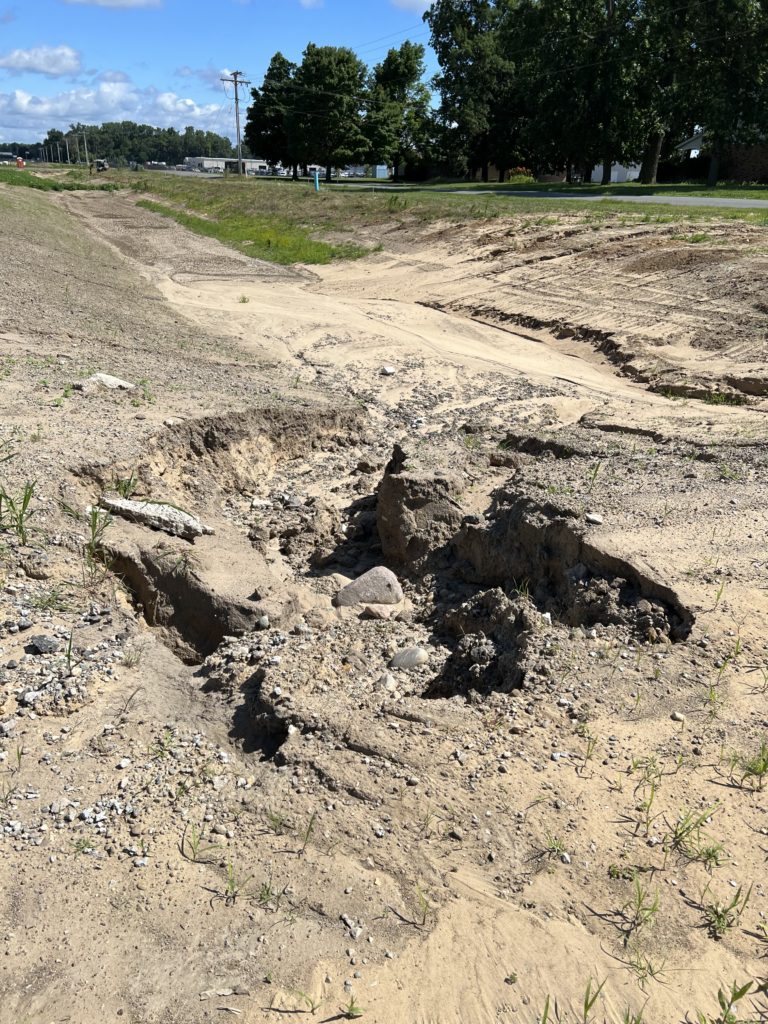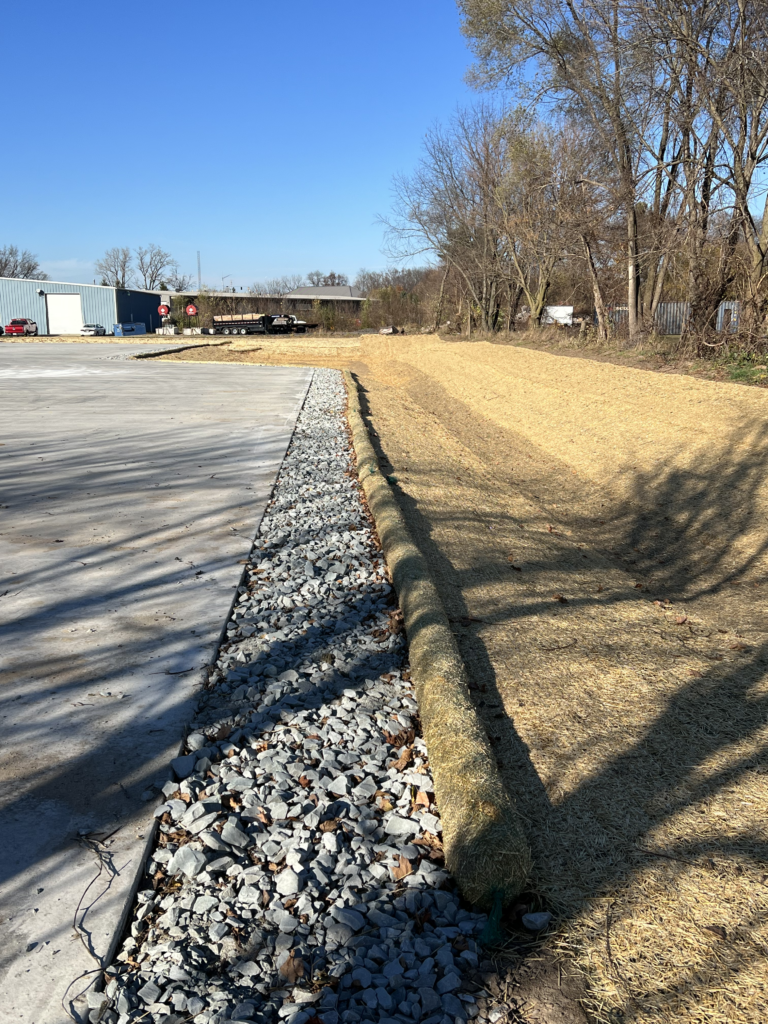Blogging BMP’s
A monthly Blog discussing the Best Management Practices (BMP’s) that must be used to aid in erosion and sediment control
Welcome back to another edition of Blogging BMP’s! It is that time of year again, you know, “the most wonderful time of the year!” That is unless you are a contractor and you are trying to squeeze a couple of jobs in before the end of the year to take advantage of those regularly occurring 50 degree days in November and December here in Elkhart County. You are probably wondering why this is a bad thing, and I don’t blame you. So many projects are out there and so little time to do them, why wouldn’t you want to peel off another 20 acres of topsoil and get another building built?
From the business owner’s perspective this is a win/win situation. They get a jump start on a project that may have waited until March or April of the next year. Now they are pouring footers and raising a building! They’ll be pumping out product in no time! But as the old ball coach says, “Not so fast my friend!”
It is important to note that any disturbed soils will need to be stabilized within 7 days for the winter to prevent sediment from leaving project sites. This is a requirement of the Construction Stormwater General Permit and just common sense if you think about it. So before you squeeze that last earthwork job in this winter, here are a couple of ways to temporarily stabilize a jobsite after the optimum seeding time has passed (mid November).
- Do a dormant seeding and cover the area with erosion control blankets (See Photo) to help prevent the seed from running off with the water when it rains or we experience a snow melt. It is a best practice to bump up your seed rates about 10% to make sure there is enough there in the spring when things start to germinate.
- Hydro-seed is a good way to kill 2 birds with one stone. If this is sprayed on at the appropriate rate and has the opportunity to settle in, it will hold through the season and provide a nice blanket of grass in the spring.
- Sod is a quick and inexpensive option for smaller areas and provides almost instant stabilization, even in the winter. It can be a bit labor intensive, but is worth the time and effort.
The main thing to consider is that you should not just do nothing (See Photo). When areas of soil are disturbed and not stabilized, the potential for soil erosion/run off greatly increases. Here in Elkhart County it is not out of the ordinary to receive a 2 inch rain event in the winter months causing major erosion.
For more information on the requirements of the Stormwater Construction General Permit and additional ways to temporarily stabilize your jobsite, please visit our website at www.elkcoswcd.org and visit our construction tab. Thank you for your efforts in preventing the number one pollutant to our waterways, sediment.

